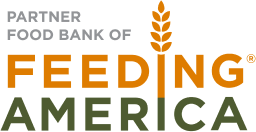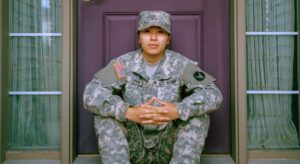Food Insecurity in Women-Led Households
Female headed households were already more vulnerable to food insecurity, but Covid made it worse
By Amber Wright, Development and Marketing
Women have been fighting for equality since before Susan B. Anthony advocated for women’s rights. Our nation has made great strides with females winning the right to vote, gaining employment in greater numbers and the Equal Credit Opportunity Act of 1974, which allowed women to legally own credit cards separate from their husband. However, lasting effects of gender inequality has left many women still experiencing disparities in areas such as poverty and food security.
National food insecurity rates were dropping during the years leading up to Covid, but that trend excluded certain groups such as woman-led families. After the pandemic made its devastating economic impact, they continue to experience higher rates of food insecurity than their peers. More than a quarter of women-led families currently struggle with hunger.
Women are more vulnerable to food insecurity if they have children, although women are more likely to live in poverty even without them. They suffer from greater unemployment during Covid, lower wages, extra childcare responsibilities, and disproportionate health consequences. While this holds true globally, for this blog we will focus on data from the United States.
A great deal of stigma has often plagued single mothers throughout history. Racially charged depictions of the “welfare queen,” along with pervading religious dogma, have contributed to this stigma. Ohio and several other states even considered forced sterilization of single women who had another child while on public assistance. Besides being archaic, this stereotype completely ignores half of single mothers who are divorced, separated, or widowed. It also fails to consider the number of women who are victims of trauma, fleeing physical abuse, or became pregnant because of sexual assault.
Households run by single mothers are the second most common family type in the U.S., accounting for 80.5% of all single-parent families and almost half of all low-income families. This group experiences poverty at more than double the rate of their male counterparts, with 23.4% of single mothers living in poverty compared to 11.4% of single fathers. The numbers are far worse compared to married couples with children, who sit around 5%.
Since food insecurity is driven by lack of income and other critical resources, it is important to look at the inequities regarding employment. In general, women now make 98 cents for every dollar a man makes working the same job. However, the average for single mothers is lower at 82 cents. Average pay is even less for single mothers that are Black (64 cents) or Latina/Hispanic (56 cents).
Our country’s recent recession is the first time unemployment has risen into the double digits for women since the Bureau of Labor Statistics began reporting data by gender in 1948. Since the onset of the Covid economic crisis, women in general have suffered job loss at a higher rate (15.7% for women compared to 13.3% for men.) Once again, rates are higher for Black women (15.8%) and Latina/Hispanic women (19.8%).
This latest economic downturn more adversely effected the service industry, which is disproportionately staffed by women. Data shows women are twice as likely to work in low-wage, part-time jobs with few to no benefits. This leaves many of them lacking adequate health insurance and medical care. Of all groups, single mothers are most likely to lack coverage. It further jeopardizes their basic income if sick leave is not provided. It is also worth noting that unlike most of our peer countries, the U.S. does not grant new mothers paid leave.
Another contributing factor is closures of schools and child-care facilities. Women carry a higher burden of childcare responsibilities: 80.5% of all single-parent households are run by a mother alone. Of these households, only a third received any child support payments, which averaged only $286 a month. The average cost of childcare alone is $808/month in Ohio and a little more than $750/month nationally. However, many facilities shut down entirely during Covid, leaving many women out of options regardless of income or support. This forced a large number of women, especially single mothers, out of the workforce. While households with children who miss school due to Covid-19 receive P-EBT benefits, the parent is still responsible for grocery shopping and food preparation.
Children suffered higher rates of food insecurity after school closures. Not only can the family’s primary source of income be effected, but schools are no longer providing regular meals. The mother is now faced with lack of childcare and the burden of providing and preparing extra meals during the day.
Both mothers and children experience disparities in health conditions tied to food insecurity. Proper nutritional intake not only effects a child’s current health, but also their mental, physical, and social development. The USDA has stated children from food insecure homes are more likely to suffer adverse outcomes, such as chronic health conditions, slower progress while learning in school, and more difficulties with social development.
Women are more likely than men to experience weight gain or obesity while food insecure, but at the same time are less likely to consume more than 50% of the recommended energy intake compared to food-secure women. This is often linked to the consumption of cheap, calorie-rich food.
The mental health of women also declines as food insecurity increases. It is not surprising that people lacking regular access to nutritious food show higher rates of depression and other mental health disorders. In turn, this can further reduce the stability of regular employment.
Social Programs, like the Supplemental Nutrition Assistance Program (SNAP), are proven to reduce food insecurity. Research has shown that food insecure mothers who receive the benefits display improvements in both mental and physical health. Women, Infants and Children (WIC) further helps mothers with young children access proper nutrition and overall better health, but the dollars do not stretch far. According to the Center on Budget and Policy Priorities (CBPP), the estimated national average of SNAP benefits only amounts to roughly $5.78 per day ($1.93 per meal.)
We have recognized several levels of disparities regarding food insecurity in women, particularly women of color. Continuing research has shown positive improvements in health and livelihood for food insecure women with help from various public benefit programs, but the support is not enough to close the gap. In the spirit of equity and advocacy, we suggest a call to action for legislatures to increase funding for these initiatives.





No comment yet, add your voice below!